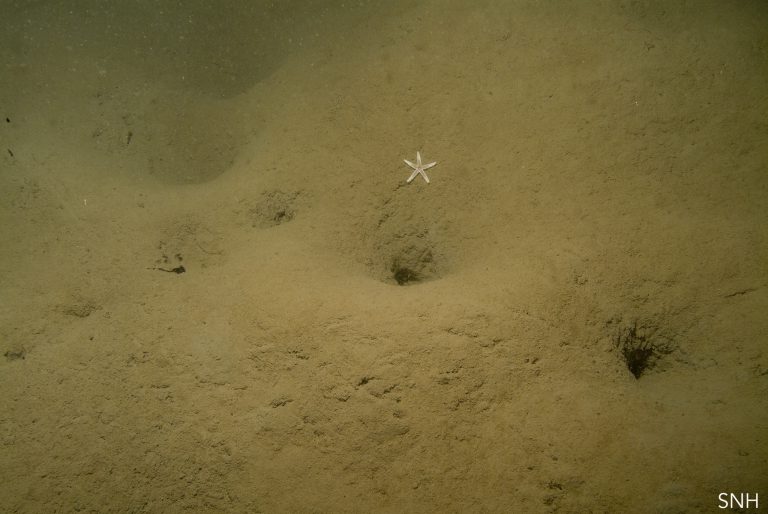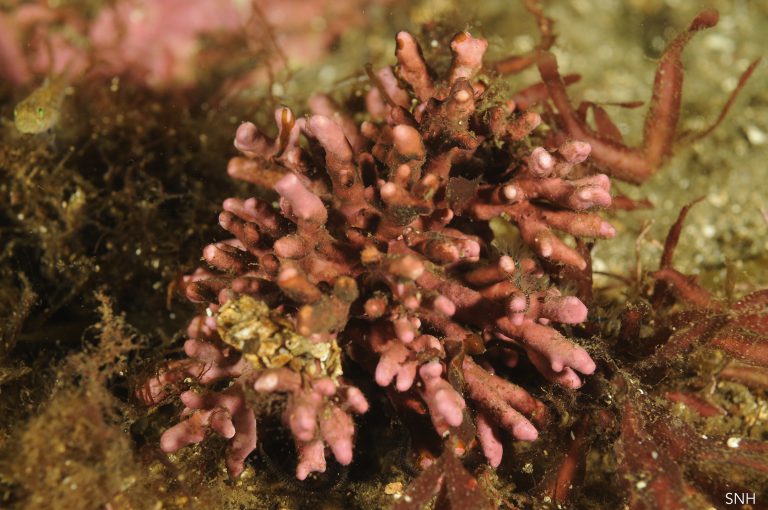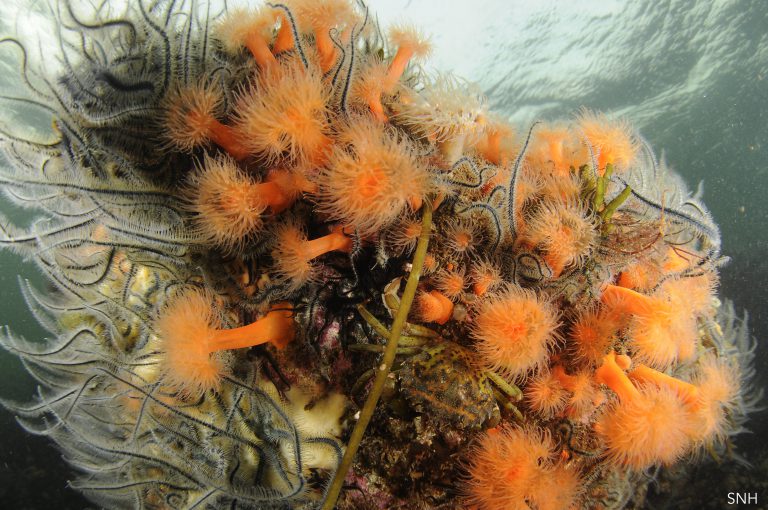Loch Sween MPA
Loch Sween Nature Conservation Marine Protected Area was designated to protect the rich maerl beds and burrowed mud. The Loch Sween MPA is home to one of Scotland’s most important populations of native oyster! This area also includes the mouth of Loch Sween and the McCormaig Isles which is a high energy tide-swept environment.
The Loch Sween MPA consists of the main basin of the sea loch and its many arm-like extensions. The Tayvallich peninsula is designated for woodland and its associated habitats and breeding birds. Taynish between Loch Sween and Linne Mhuirich is managed as a National Nature Reserve and Knapdale Woods to the north is the site of the Scottish Beaver Trial reintroduction project. Tayvallich is the main settlement adjacent to the site where there is a natural harbour which is busy with recreational and fishing crafts.
Protected features:
- Burrowed mud (found in the deeper parts of the central loch basin)
- Maerl beds (narrow tidal entrances of Linne Mhuirich and Caol Scotnish)
- Native oysters (scattered across the MPA with concentrations in some inlets)
- Sublittoral mud and mixed sediment communities
Burrowed mud, maerl beds and native oysters are OSPAR Threatened and / or Declining habitats or species, considered to be under threat and in decline in Scottish waters.
Burrowed Mud
Home to volcano worms which (Maxmuelleria lankesteri) which live in burrows beneath the seabed. They share this habitat with Norway lobsters, shrimps and burrowing gobies.
Maerl beds
The narrows at Taynish and Caol Scotnish provide the ideal conditions for maerl beds. Within the Caol Scotnish rapids, Lithothamnion glaciale is the dominant species and forms a dense bed. The beds within the Taynish rapids comprise both Lithothamnion glaciale and Phymatolithon calcareum, but the latter is the dominant maerl forming species and beds here.

Native oysters
In Loch Sween Native oysters occur patchily, as evidenced by the shells on the beaches along the coast. This population is considered to be of national importance.

Sublittoral mud and mixed sediment communities
The MPA also includes the Sound of Jura at the mouth of the loch that surrounds the Isle of Danna and McCormaig Isles, where the seabed is made up of coarser sediments. This is due to the high energy conditions found here.
Other protected areas
The Knapdale Woods, to the north, includes two SSSIs and are the site of the Scottish Beaver Trial reintroduction project.
Taynish National Nature Reserve (NNR) is an ancient oak wood with breeding woodland birds including redstart and wood warbler, and rare marsh fritillary butterflies. Set between Loch Sween and Linne Mhuirich, the NNR is part of the Taynish and Knapdale Woods SAC.





